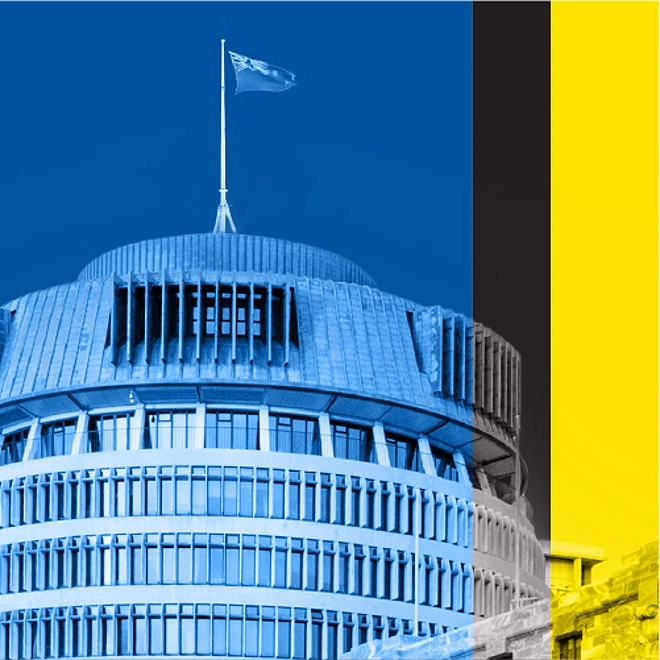Inland Revenue reports back on trust disclosure data
Tax Alert - December 2023
By Viola Trnski & Robyn Walker
Following the introduction of the trust disclosure rules (the Rules) in s59BA of the Tax Administration Act 1994, Inland Revenue has now released its interpretation of the first dataset collected (from the 2022 income tax year), common errors that have been made, and an outline of what to expect going forward.
As a quick refresher, the Rules were and introduced for the 2021-22 and later income years with no consultation – and requires certain trusts (generally, domestic trusts with assessable income that are not specifically excluded) to provide additional financial information. Additional details of settlements and beneficiaries are also required, where applicable.
What are Inland Revenue’s insights?
The raw data collected has not been published – instead, Inland Revenue released a report summarising the data and their insights.
The Rules were introduced to analyse behaviour change in response to the tax rate differential that was created between the trust tax rate (33%) and the top personal tax rate increasing to 39% and to provide insight into how trusts are being used.
Volumes of trusts and disclosures
The data, extracted in June 2023, covers 226,000 IR 6 forms received in the 2022 year, including 167,000 disclosures made under the Rules. The Report notes that:
- 26,000 trusts did not provide financial information despite indicating they were required to comply with the Rules;
- 16,000 only completed the IR 10 but were actually required to complete the IR 6 as well; and
- 11,500 made disclosures despite not being required to.
The amount of errors suggests that some trustees are not adequately informed about their tax obligations.
Trust assets and liabilities
The total value of assets reported by all trusts and estates amounted to $470 billion. Of this amount, $191 billion was held in land and buildings, and $91 billion was held in shares.
Trustee and beneficiary income: Beneficiary current accounts
The Report indicates a shift in behaviour following the increase in the personal tax rate to 39%. The number of individuals deriving beneficiary income from a trust with personal income between $170,000 and $180,000 increased from 450 individuals in 2020 to 1,850 individuals in 2022 – although this still remains a very small proportion of total beneficiaries (numbering 125,000).
Further, half of the 4,400 beneficiaries who were allocated income in 2020 and were earning over $180,000 are now earning less than $180,000. Inland Revenue speculates this may indicate structuring around the increase in the personal tax rate, or it could be due to some beneficiaries retiring. The mean (52 years) and average (56 years) age of beneficiaries is provided, but information on what age these specific beneficiaries are, which may provide more context to evaluate these conclusions, is not.
The amount of beneficiary income derived by those earning between $170,000 and $180,000 increased between 2020 and 2022, while the amount of beneficiary income allocated to those earning more than $180,000 halved. This suggests that people earning just below the 39% personal income tax threshold may have reduced their salary to remain within the 33% income tax bracket, and then distributed prior year trustee income instead. However, the amount in question reflects a relatively small proportion of income overall, being $149 million of $4.6 billion allocated (0.03%).
The 2022 trust disclosure information showed the total number of beneficiary current accounts with a credit balance was 75,000, amounting to a net liability of $42 billion, while 24,000 trusts reported a debit balance, amounting to $12 billion. The net total balance is a $30 billion credit.
The largest category of beneficiaries, by age, is those aged 60-65, and the surrounding age brackets. This age group also retains the highest average beneficiary income, closely followed by those in the 16-20 age bracket. Inland Revenue comments that this ‘significant spike’ suggests trustees seem to be planning around the minor beneficiary rule. On the other hand, young adults in that age bracket also have increased responsibility and independence – and generally, lower income - and life changes such as attending university, moving out of home, and travelling overseas for this age group are genuine reasons these distributions might be made.
Inland Revenue focuses on cases of non-compliance with the minor beneficiary rules and allocating income to charities, which fortunately are rare – out of 315,020 active trusts, non-compliance with these rules occurred in 450-500 trusts, which equates to a rate of about 0.0016% of non-compliance.
The data picked up on $67 million of income allocated, but not distributed, to tax-exempt beneficiaries (i.e., charities). This may be due to a timing mismatch, however, Inland Revenue is now collecting opening and closing balances to monitor this trend going forward.
Settlors and Appointers: Settlements
The data showed that individuals, as opposed to companies or partnerships, were the main settlors and appointers of trusts, being 159,857 out of 165,350 unique settlors and/or appointers. Almost one-third of trusts (29%) required to provide details of settlors did not.
The total value of settlements disclosed was $14.1 billion, constituting $5.8 billion in cash, $2.5 billion each of shares, and financial arrangements. Other categories included services, land, buildings, and “other”.
Despite the limitation in the data analysis, Inland Revenue’s decision to produce the Report does provides helpful insight into how the data might be used to inform future changes to the IR 6, IR 6S and IR 6B forms, as well as compliance activity and potential policy changes.
Common errors
Inland Revenue has also explained some common errors they came across in the first round of trust disclosures. These included:
- Not including the details required for settlors, beneficiaries, and appointers;
- Recording an IRD number that does not match the name or date of birth of the person;
- Information not being provided on settlors and settlements;
- Disclosing historical settlements (which is not required); and
- Leaving financial boxes blank where there should be a value.
Are there any changes ahead?
Yes – but not significant ones. This is highlighted in the final Post-implementation review section of the Report.
In short, unless the new Government has an alternative view, the Rules are here to stay, but Inland Revenue, following consultation, has indicated some minor technical changes to wording, categories, and how amounts are calculated, may be made for the 2024 return process. The substance of the information being asked for remains the same.
Proposed changes include:
- Move ‘Current account year-end balances’ to the ‘Liabilities’ section, rename it to ‘Beneficiary current account’, and allow positive and negative values.
- Create a separate section (‘Other metrics’) for the trust’s untaxed realised gains and drawings.
- Rename ‘Drawings’ to ‘Amounts withdrawn by beneficiaries’.
- Add categories for ‘Other assets’ and ‘Other liabilities’ and change the ‘Total assets’ and ‘Total liabilities’ to calculated fields.
- Rename ‘Equity’ to ‘Accumulated trust funds’ and change this to a calculated field based on total assets minus total liabilities.
- Enable disclosure of distributions valued at nil.
Note that, as of 16 November 2023, Inland Revenue is “currently considering...whether [these] changes can be made” for 2024 returns. The above changes are only proposed at this stage and appear to depend on whether software providers can implement the changes for 2024.
Inland Revenue has committed to a more comprehensive post-implementation review in 2024.
What does it all mean for me?
The new Government has announced they will increase funding for Inland Revenue to complete audits and investigations. Officials have reflected this sentiment, advising that audit and investigation activity is likely to pick up now the demands of COVID-19 have passed. The Report notes that a key outcome of the data is “progressively deploying compliance interventions”, which may range from education to direct investigations.
Further, the Report raised some policy issues that may lead to legislative amendments, such as creating a window during which income allocated to charities or tax-exempt beneficiaries must be paid or notified within, or else be taxed at the trust rate (such a rule exists in Australia). However, with a slew of other changes to implement under a new Government, it is unclear if changes to the Rules will sit high on the list of priorities.
Now is a good time to review the use of trusts and to ensure that all compliance obligations are understood and complied with.
If you have any queries, please contact your usual Deloitte advisor.
December 2023 - Tax Alerts




